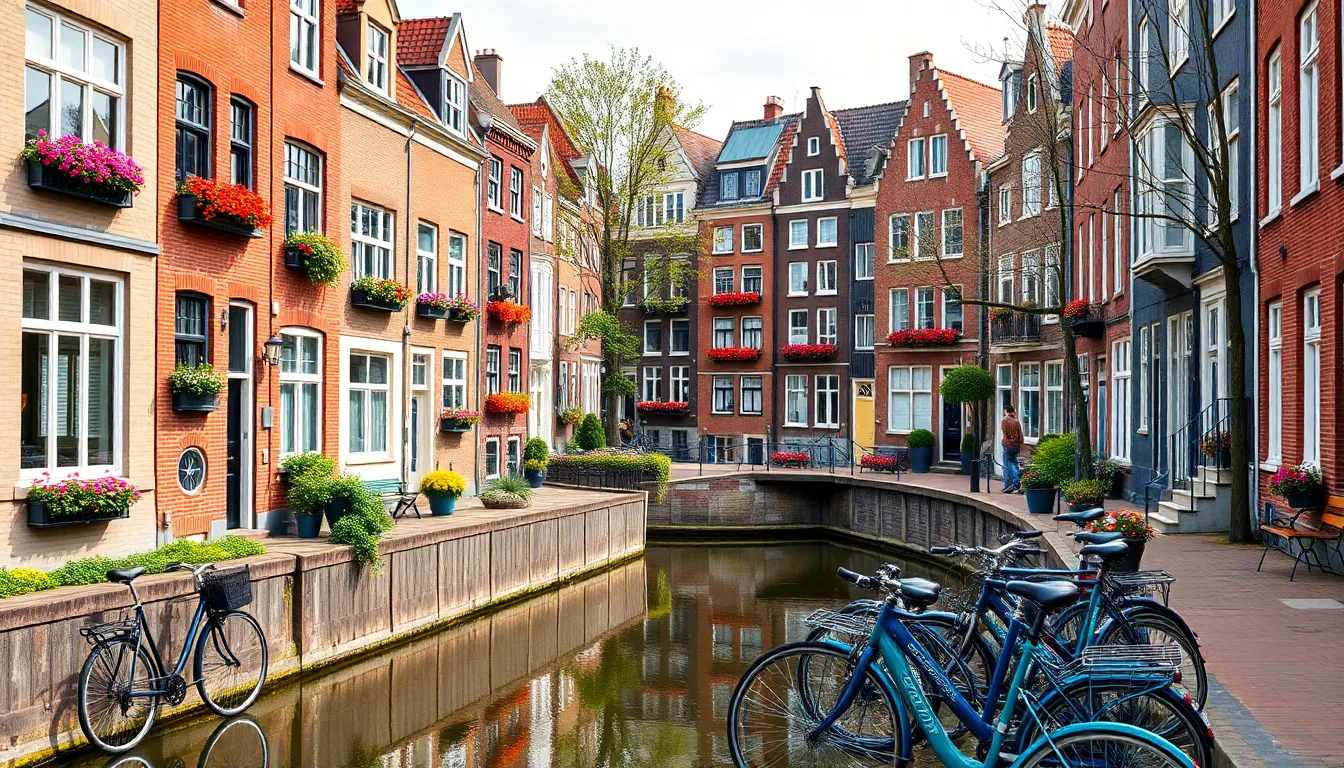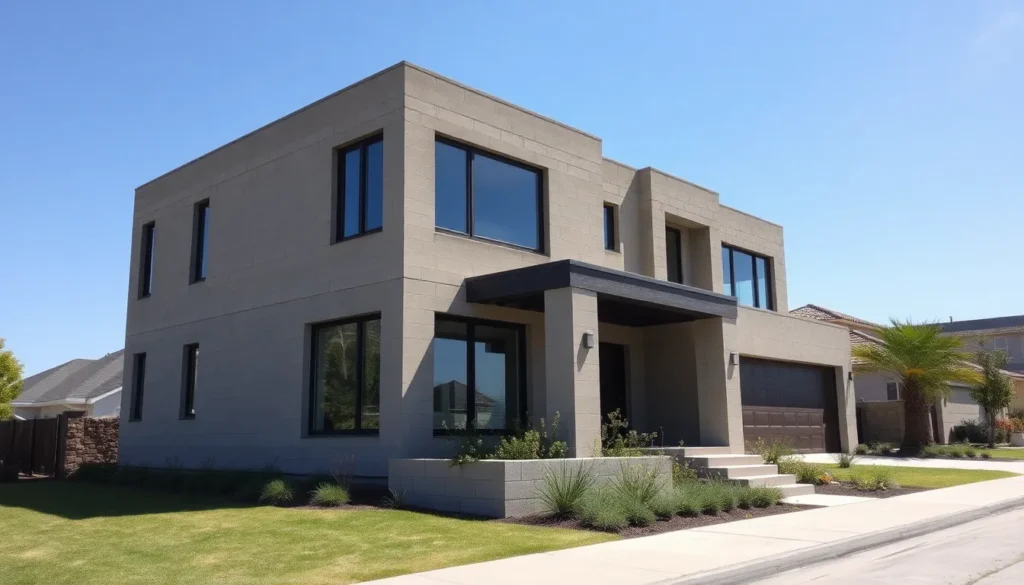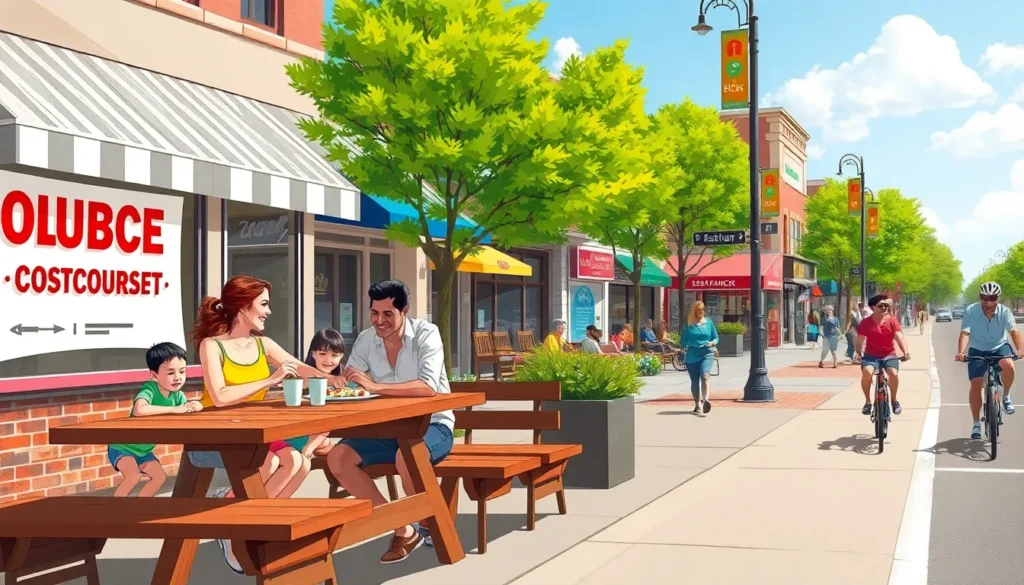Amsterdam, the land of picturesque canals and vibrant tulip fields, is a dream destination for many. But before packing those bags and hopping on a plane, it’s crucial to understand the cost of living in this charming city. Spoiler alert: it’s not all stroopwafels and bike rides.
While Amsterdam offers a high quality of life, it comes with a price tag that might make your wallet weep. From cozy canal-side apartments to the price of a pint at a local pub, navigating the expenses can feel like a wild ride through the city’s famous bike lanes. But don’t worry! With a little insight, anyone can find ways to enjoy the Dutch capital without breaking the bank. Let’s dive into what it really takes to live the Amsterdam dream without losing your financial sanity.
Table of Contents
ToggleOverview of Amsterdam Cost of Living
Amsterdam ranks among the most expensive cities in Europe. Housing costs account for a large portion of expenses. The average rent for a one-bedroom apartment in the city center reaches approximately $1,800 per month. Outside the city center, rent drops to about $1,400, but affordability varies by neighborhood.
Utilities including electricity, heating, cooling, water, and garbage collection typically cost around $200 per month for an average apartment. Internet service adds another $50 to $70 monthly expense.
Transportation options include an efficient public transport system. A monthly public transport pass costs about $85, while cycling remains a popular and cost-effective option for many residents. Bicycle purchase can range from $500 to $1,000.
Grocery prices reflect the overall cost of living. A standard grocery bill averages $300 to $400 per month for one person. Regular purchases include milk, bread, and fresh produce; their costs can add up quickly.
Dining out offers a range of choices from budget-friendly cafes to upscale restaurants. A meal at an inexpensive restaurant typically costs around $20, while a three-course dinner for two at a mid-range restaurant averages about $80.
Leisure activities contribute to the overall expenses, with gym memberships typically ranging from $40 to $70 per month. Museums and attractions often charge entrance fees, but many offer discounts for students and residents.
Making those informed decisions can help manage costs while enjoying the vibrant lifestyle Amsterdam has to offer.
Housing Expenses

Housing expenses significantly impact the overall cost of living in Amsterdam. Understanding these costs helps in budgeting effectively while enjoying the city.
Rent Prices
Rent prices in Amsterdam vary widely based on location. An average one-bedroom apartment in the city center costs around $1,800 per month. Renting the same apartment outside the center averages about $1,400 per month. Neighborhood choice plays a crucial role in determining rental prices. For instance, areas like De Pijp or Jordaan are typically more expensive due to their popularity. Larger apartments or those with extra bedrooms also reflect higher costs. Even studio apartments can fetch significant prices, often starting around $1,500. Potential renters should consider the availability of amenities alongside location.
Utilities Costs
Utilities costs contribute to monthly housing expenses in Amsterdam. Residents typically spend about $200 per month on essential utilities, including electricity, water, and gas. Internet service adds an additional $50 to $70 monthly, depending on the provider and speed. Renters should expect to budget for these utilities when planning their finances. Inefficient energy use can lead to higher bills, so being mindful of energy consumption helps. Landlords often cover some utility costs in rental agreements, particularly in shared accommodations. Understanding the breakdown of these costs is essential for managing a budget effectively.
Transportation Costs
Transportation in Amsterdam offers a variety of options that cater to different preferences and budgets. Understanding these costs enhances the overall experience of living in the city.
Public Transport
Amsterdam features a comprehensive public transport system that includes trams, buses, and ferries. A monthly pass costs around $85, providing unlimited access throughout the city. Single tickets can be purchased, but they generally offer less value for frequent travelers. Trams frequently operate, making them a convenient choice for city commuting. Additionally, buses service the outskirts, ensuring even remote areas remain accessible. Cycling commuters often find public transport to be an efficient alternative during inclement weather.
Biking in Amsterdam
Biking serves as a popular and economical mode of transportation in Amsterdam. Prices for bicycles typically range from $500 to $1,000, depending on the model and condition. Many residents consider biking not just a practical option but also a way to enjoy the city’s scenic routes. Bike lanes are widespread, facilitating safe travel across neighborhoods. Maintenance costs remain relatively low, with occasional tune-ups and repairs required. Renting a bicycle provides flexibility, with various rental shops offering daily or weekly rates. The biking culture significantly contributes to the city’s eco-friendly reputation.
Food and Grocery Prices
Amsterdam’s food and grocery prices reflect its status as one of the more expensive cities in Europe. Understanding these costs helps residents and visitors budget effectively.
Dining Out
Dining out in Amsterdam offers a variety of options. Inexpensive restaurants usually charge around $20 for a meal. Mid-range dining for two can reach approximately $80 for a three-course meal. Popular areas like De Pijp and Jordaan feature many dining choices with varying price points. Local favorites include traditional Dutch cuisine and international dishes. More upscale restaurants tend to be pricier, especially those with unique culinary experiences. As a result, exploring different neighborhoods can reveal more affordable eats and hidden gems across the city.
Grocery Shopping
Grocery costs in Amsterdam typically range from $300 to $400 monthly for one person. Basic items such as bread, milk, and eggs contribute significantly to monthly expenses. Fresh produce also tends to be more expensive than in smaller towns. Local supermarkets and markets each provide a range of products, from organic options to budget-friendly choices. Bulk buying or shopping at discount stores helps cut costs. Additionally, meal preparation at home saves money compared to frequent dining out. Understanding these grocery prices allows people to manage their food budget efficiently while enjoying the local cuisine.
Healthcare and Insurance
Healthcare in Amsterdam is high-quality and accessible. Residents must obtain health insurance, which is mandatory for everyone living in the Netherlands. Average monthly premiums range from $120 to $160 per person, depending on coverage and provider. The Dutch healthcare system emphasizes general practitioners as the first point of contact.
Accessing specialists and hospitals requires a referral from a general practitioner. Many doctors speak English, easing communication for expatriates and visitors. Regions within the city feature several hospitals and clinics, ensuring ample healthcare options.
Emergency care is available at public hospitals, with costs for treatment covered by insurance. International students can procure insurance plans tailored to their needs, often reflecting lower premiums.
Pharmaceuticals, including prescription medications, can add to healthcare expenses. Prices for common medications typically range from $8 to $30 for a month’s supply. Over-the-counter drugs, however, may cost between $5 and $20.
Regular check-ups and preventative care are part of the Dutch healthcare framework, promoting overall health among residents. Preventative measures may reduce future medical costs and support a healthy lifestyle.
While healthcare costs might seem daunting, many find the system efficient, with low wait times and high satisfaction rates. Further, a comprehensive health insurance policy alleviates financial burden and ensures access to necessary services.
Entertainment and Leisure
Entertainment and leisure activities in Amsterdam can vary significantly in cost, reflecting the city’s vibrant culture. Movie tickets typically range from $12 to $16, inviting many to enjoy films in local cinemas. Various museums and attractions exist, with entrance fees averaging around $15 for standard admission, though many offer discounted rates for students and seniors. The famous Rijksmuseum and Van Gogh Museum attract thousands of visitors, often requiring advance bookings to manage crowds.
Dining out offers a spectrum of experiences. Casual cafes serve coffee and pastries for about $5, while upscale restaurants often charge $50 or more per person for a complete meal. Street food is another option, with dishes like herring or fries priced around $4, showcasing Amsterdam’s local flavors. Parks and open spaces provide free entertainment, making outdoor activities popular during warmer months.
Nightlife within the city includes bars and clubs, where cover charges can range from $10 to $25 depending on the event. Live music venues also host a variety of performances, with ticket prices around $20 to $50 for major acts, allowing music lovers to enjoy diverse genres.
Fitness and wellness pursuits can fit various budgets. Monthly gym memberships typically cost $40 to $80, and many studios offer yoga or pilates classes, averaging $15 per session. Outdoor enthusiasts can take advantage of Amsterdam’s extensive bike paths for recreational cycling at no cost, enhancing the city’s appeal for active individuals.
Overall, entertainment and leisure options in Amsterdam cater to different budgets, enabling residents and visitors to enjoy cultural experiences without overspending. Making thoughtful choices empowers individuals to relish the vibrant lifestyle while managing expenses effectively.
Navigating Amsterdam’s cost of living requires a blend of awareness and strategic planning. With housing and dining being significant expenses it’s essential to approach these aspects thoughtfully. By leveraging public transport and embracing the city’s biking culture individuals can enjoy affordable mobility.
Food costs can be managed through smart shopping and home cooking which allows for a more budget-friendly experience. Additionally accessing healthcare and entertainment options with a keen eye can enhance one’s enjoyment of the city without breaking the bank.
Ultimately Amsterdam’s charm and vibrant lifestyle can be experienced even on a budget with informed choices paving the way for a fulfilling stay.













